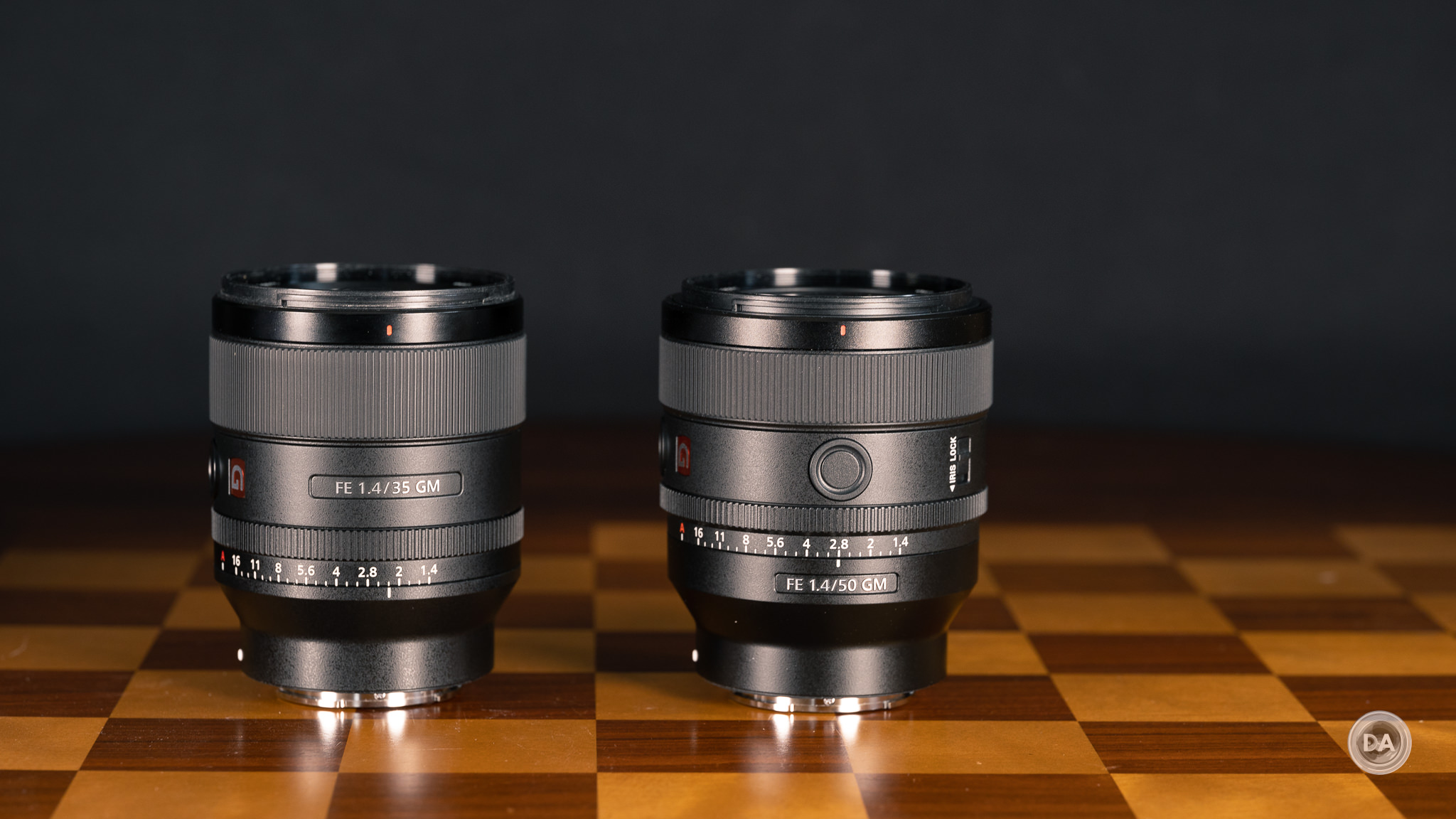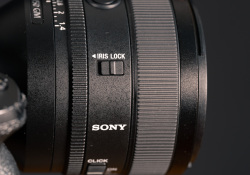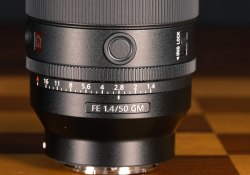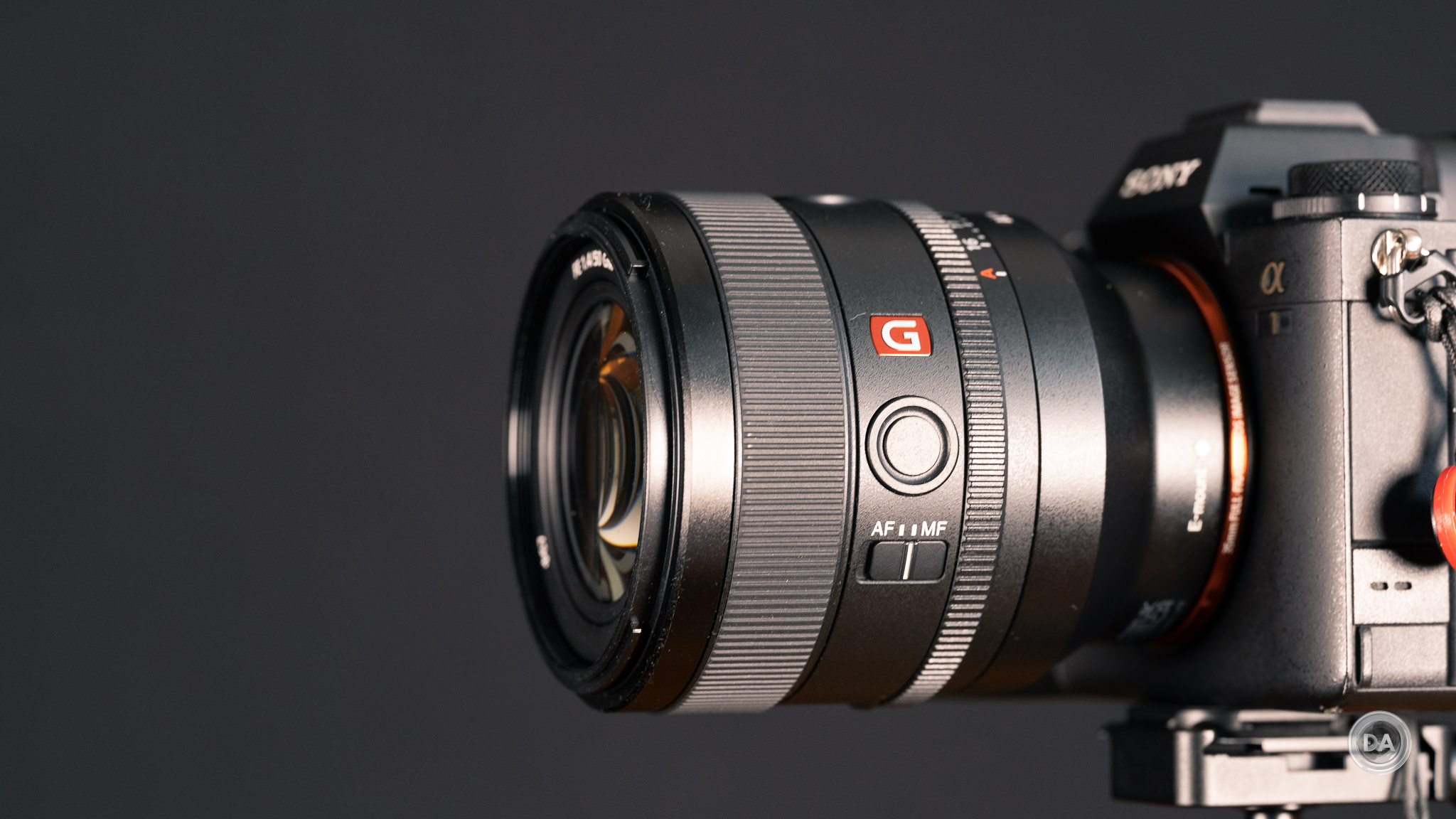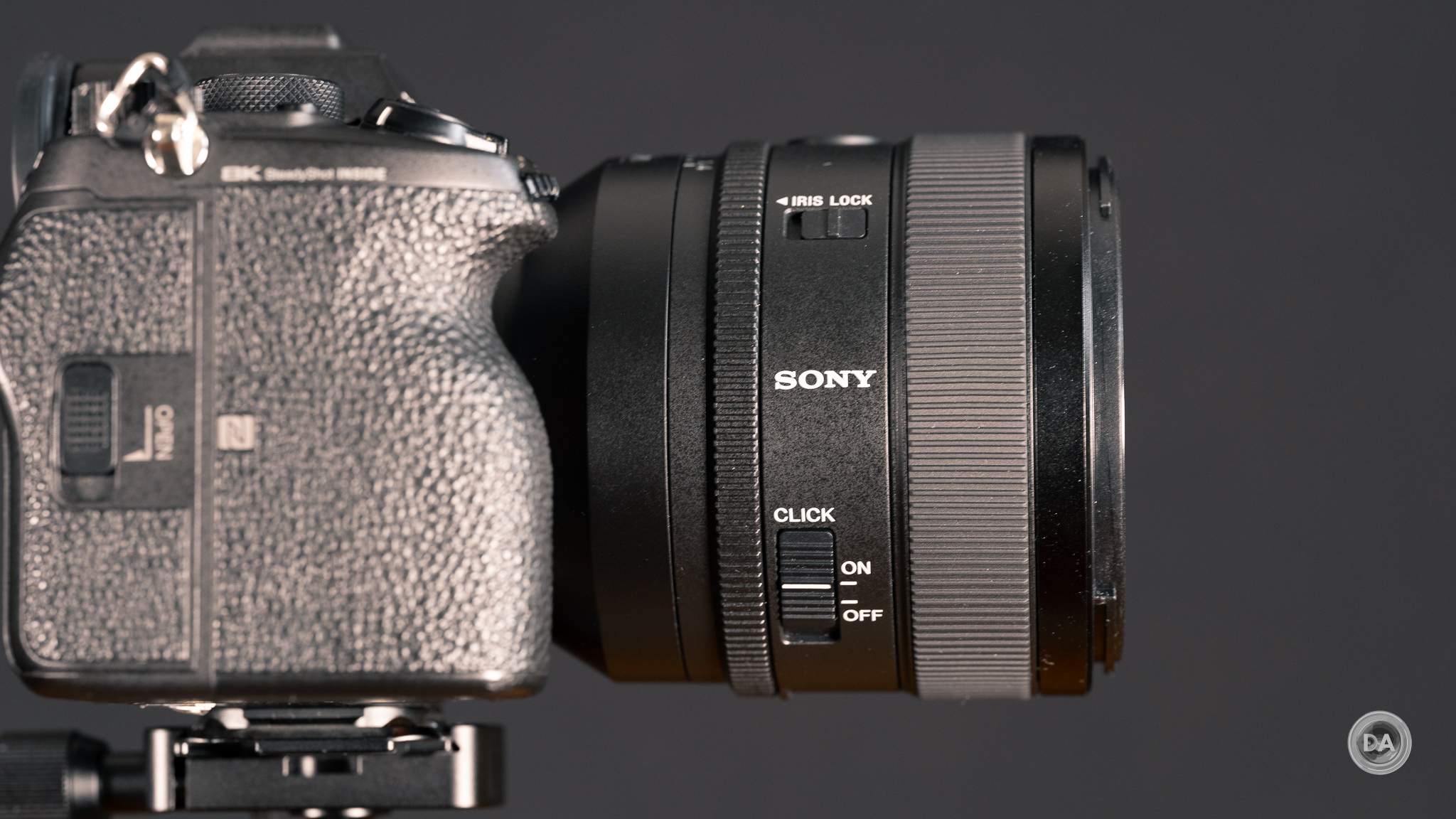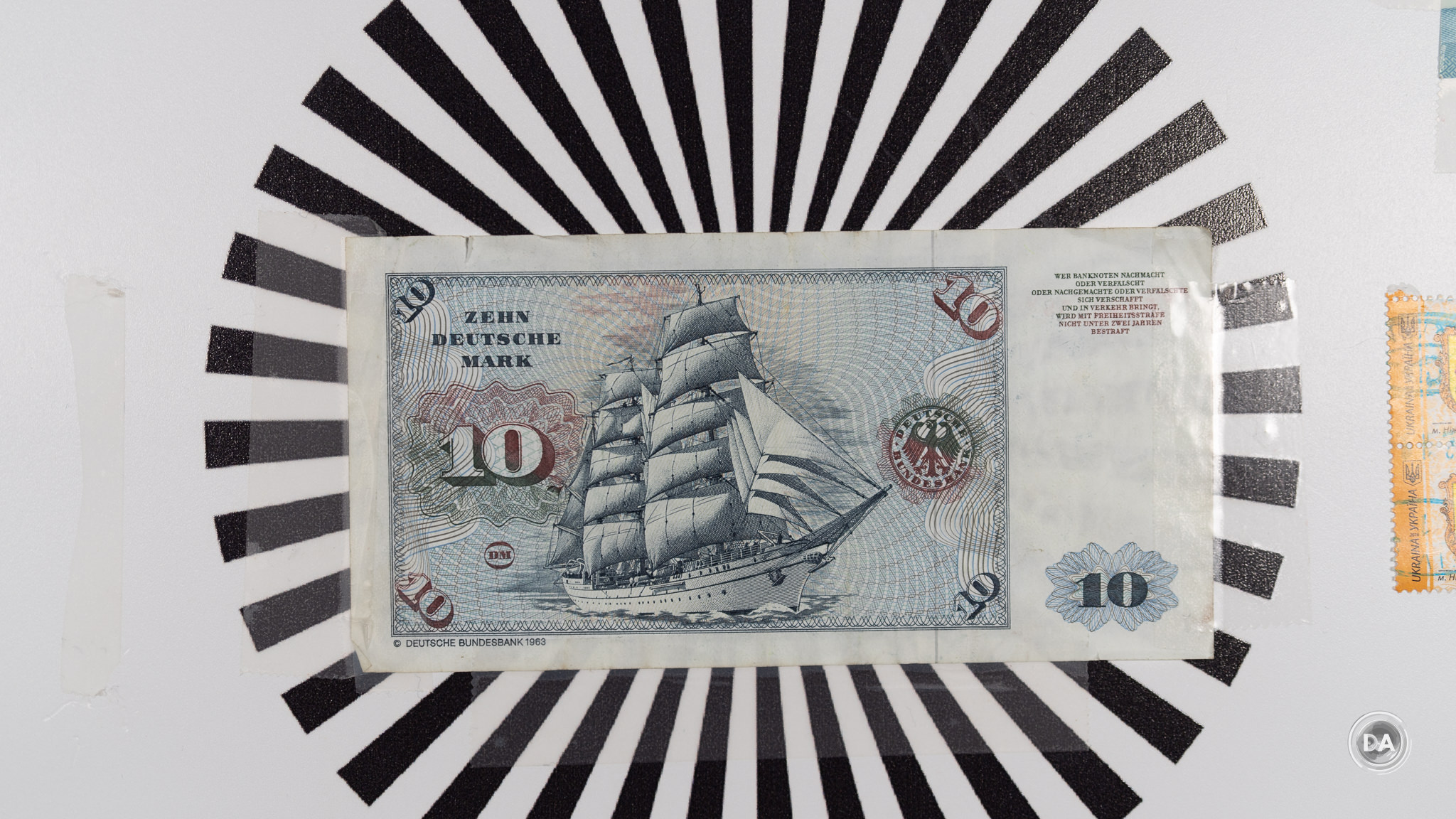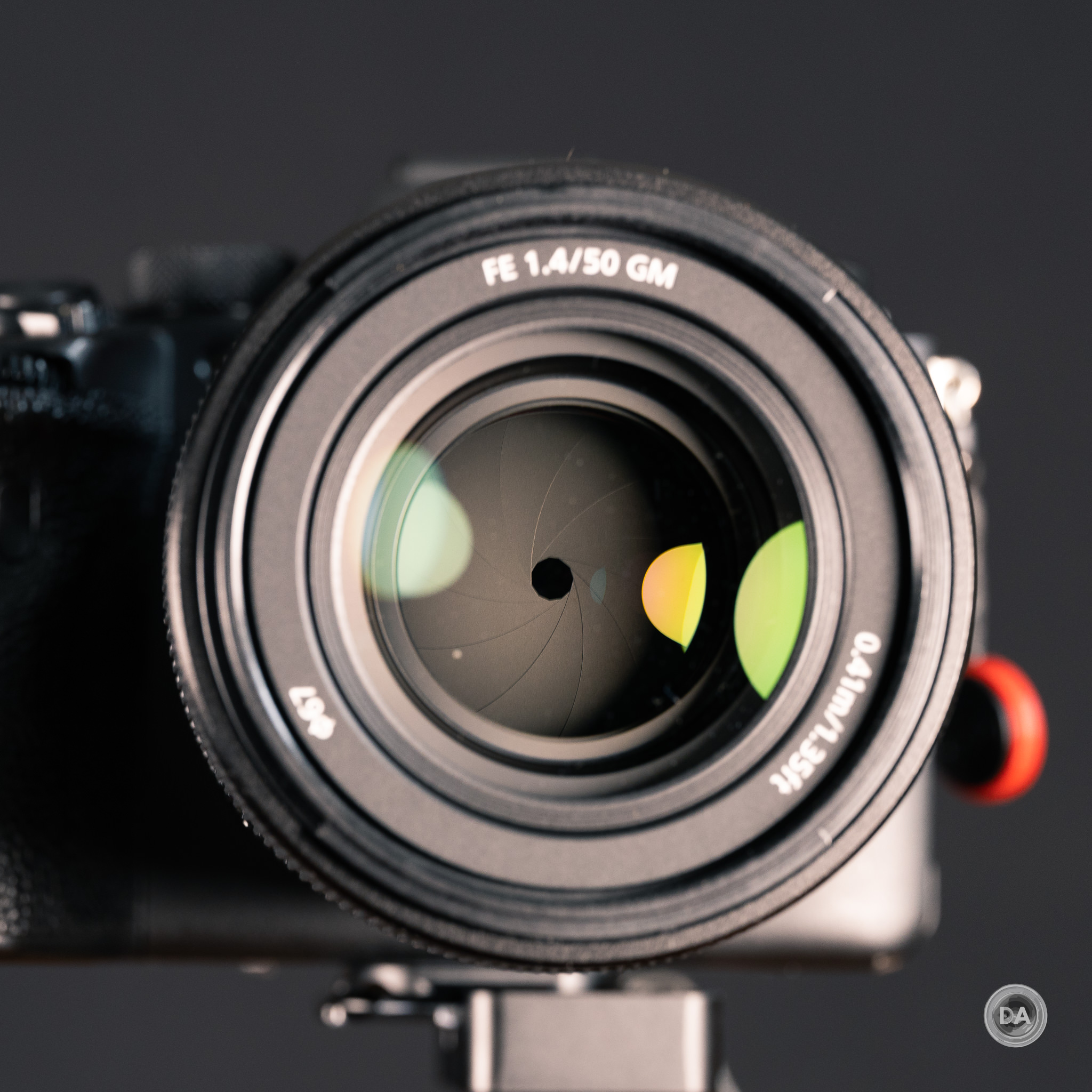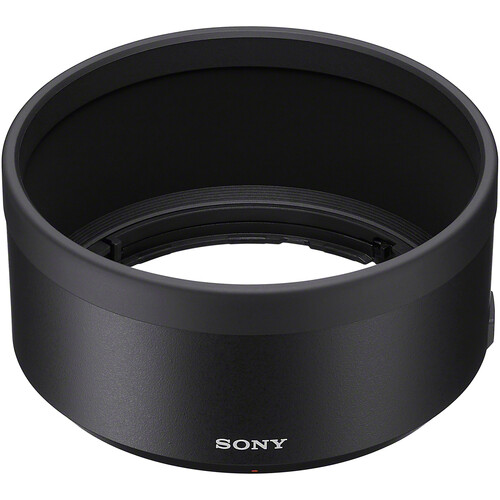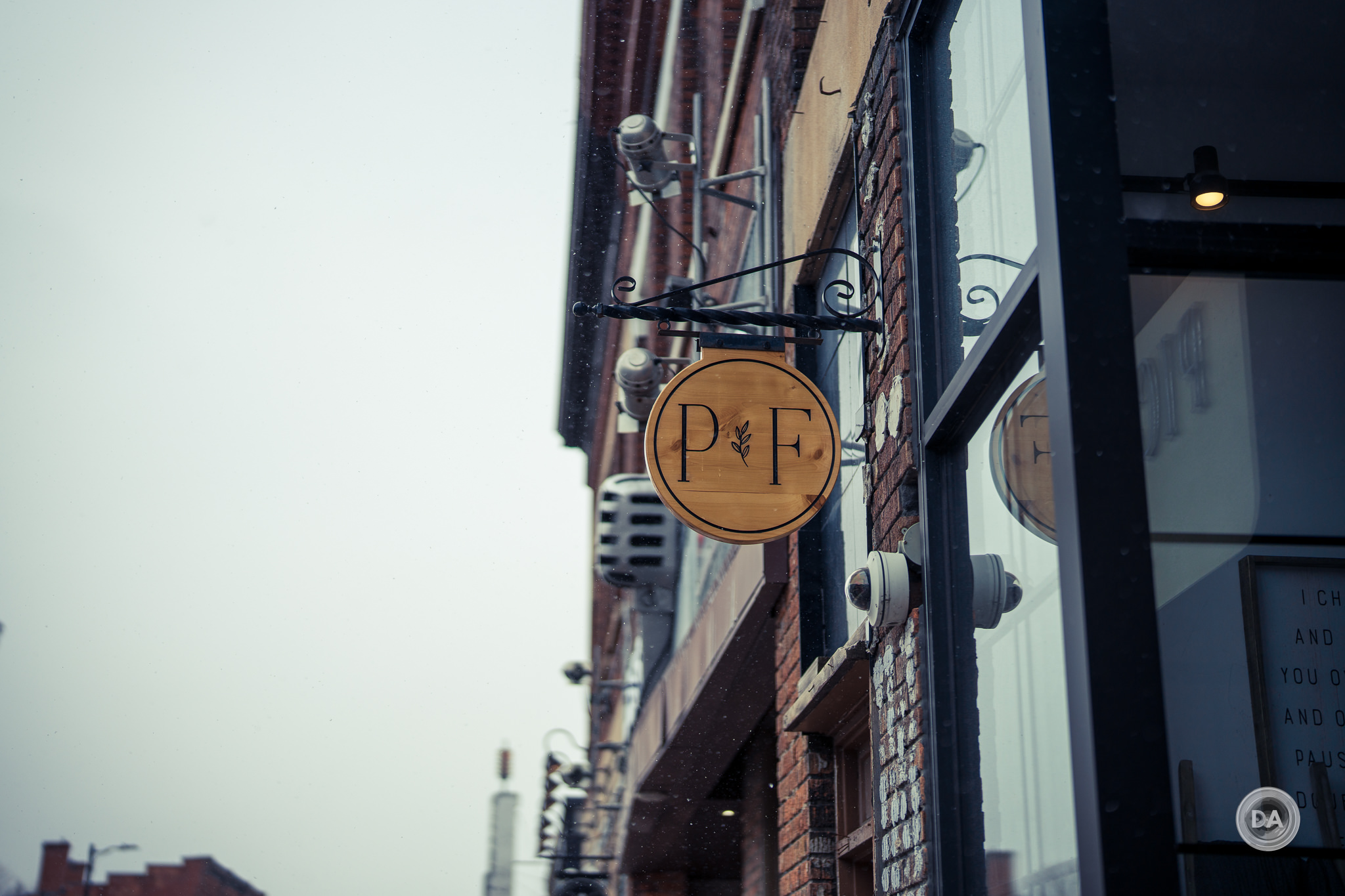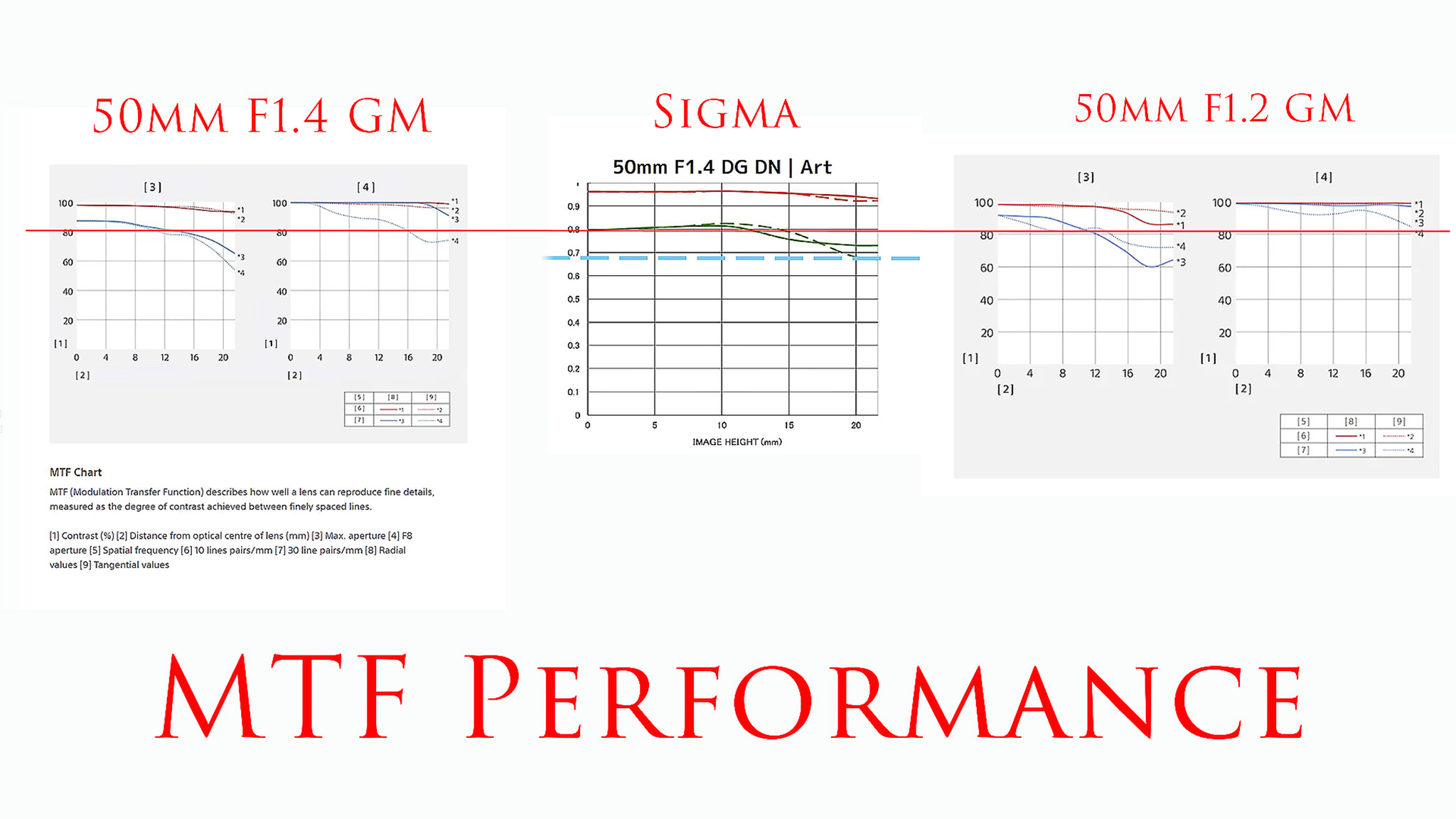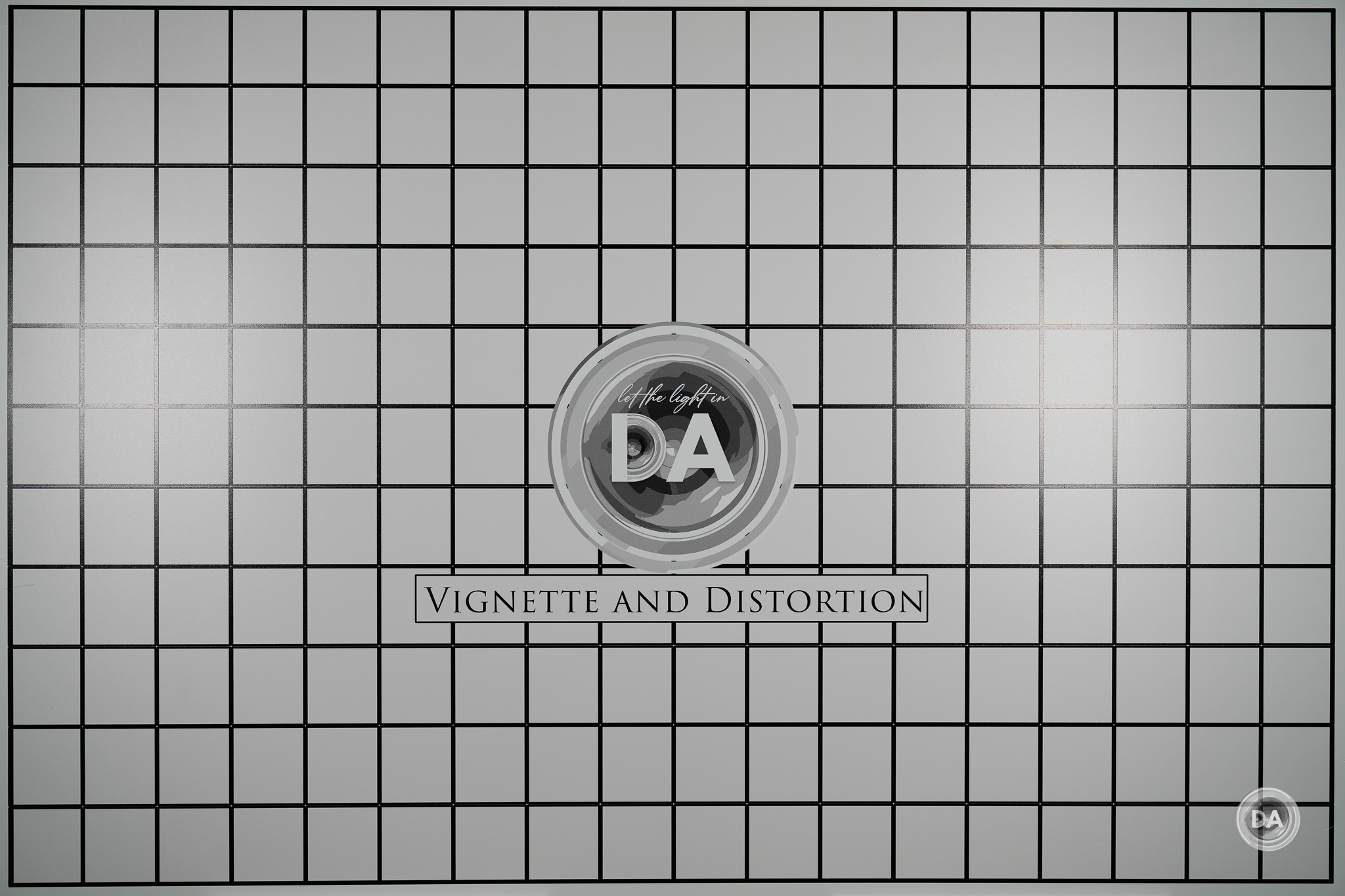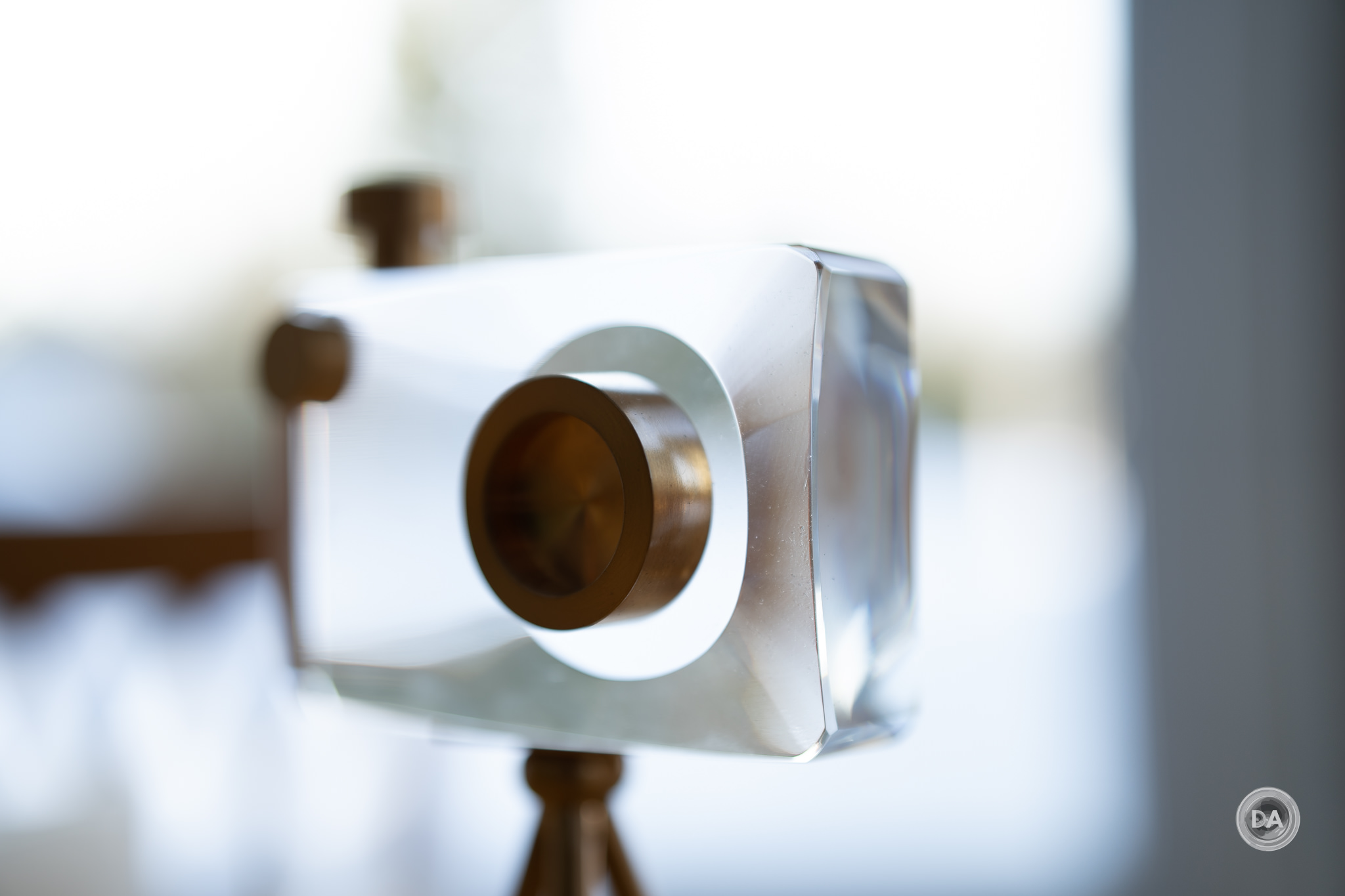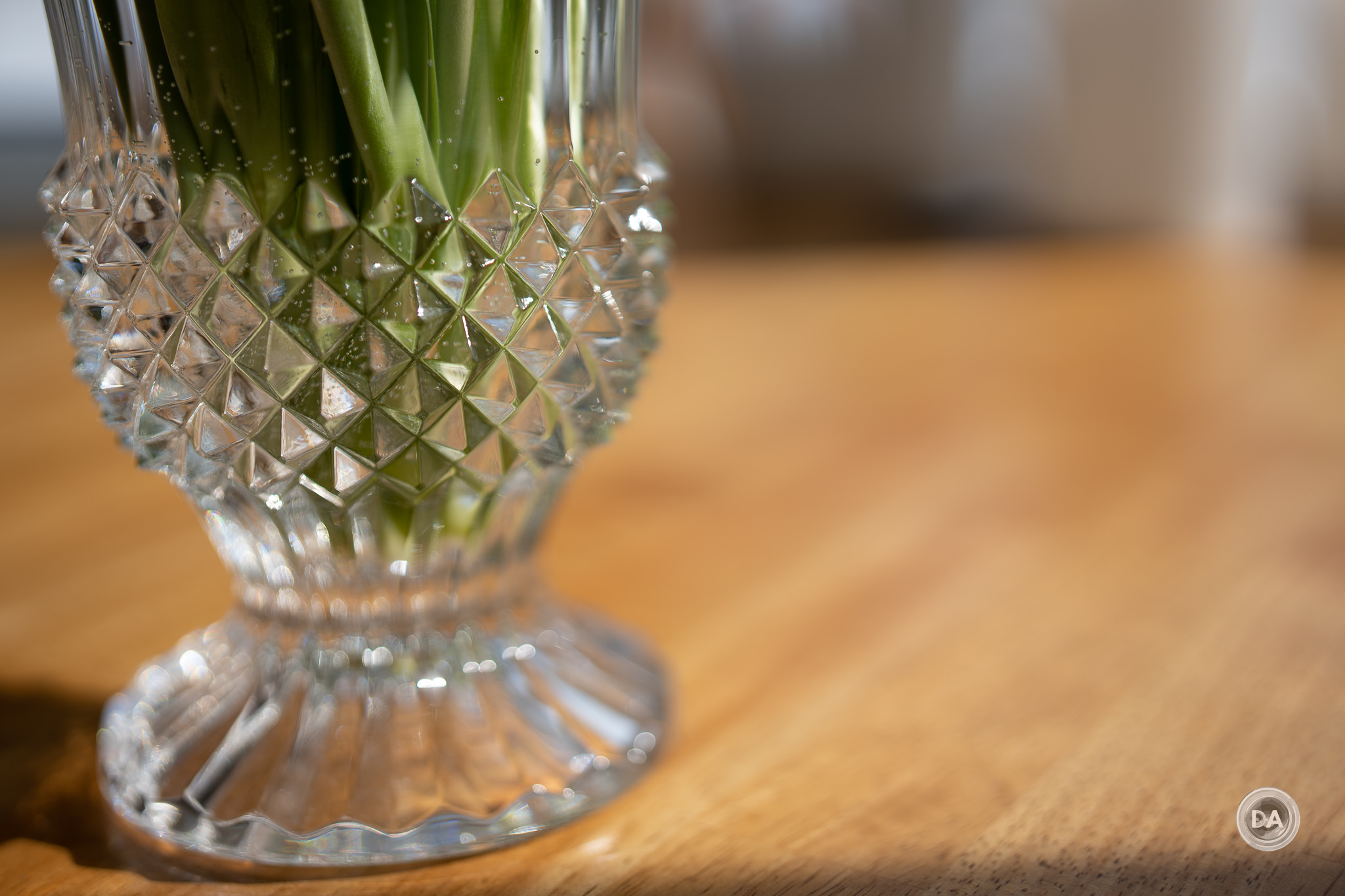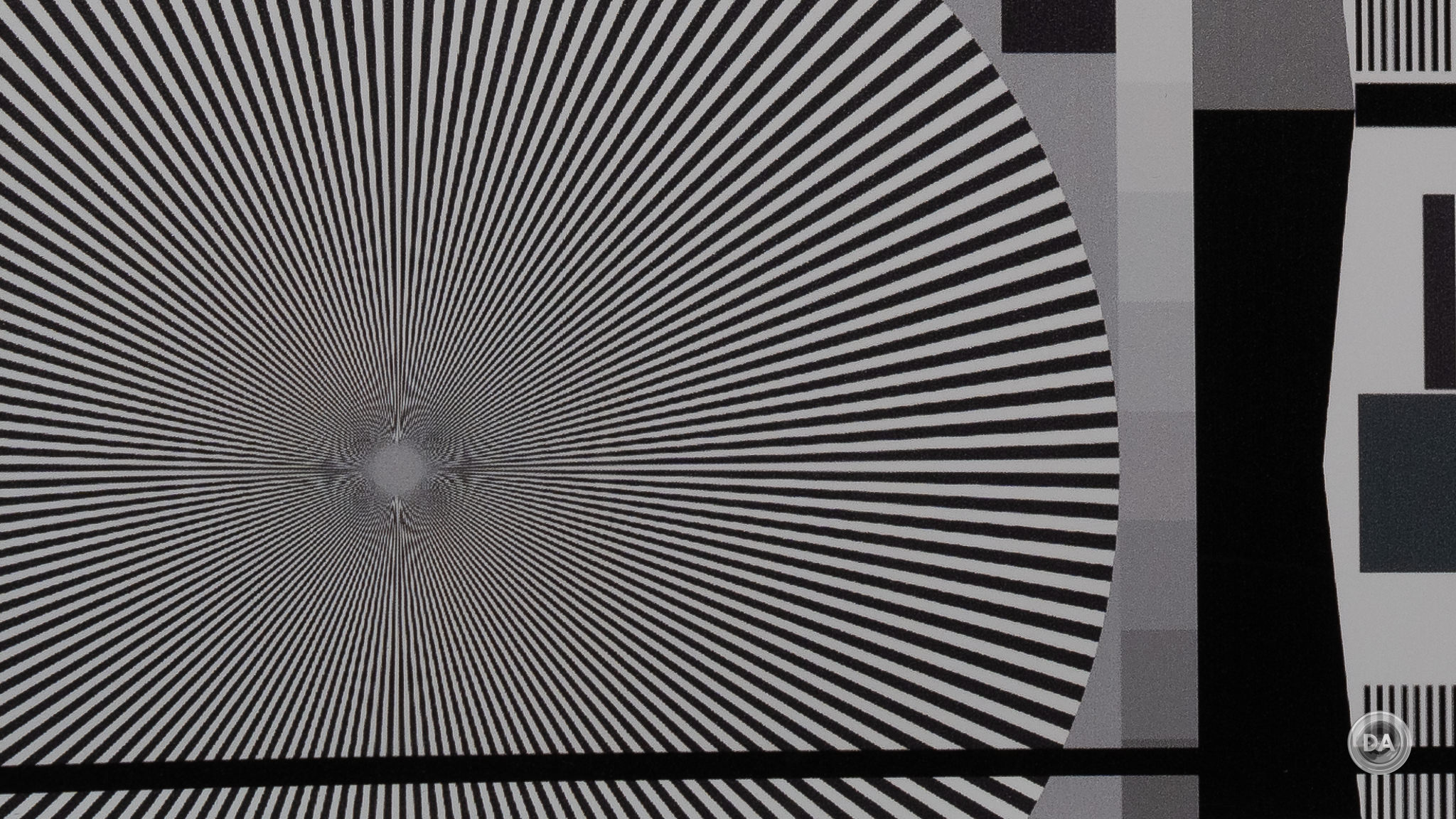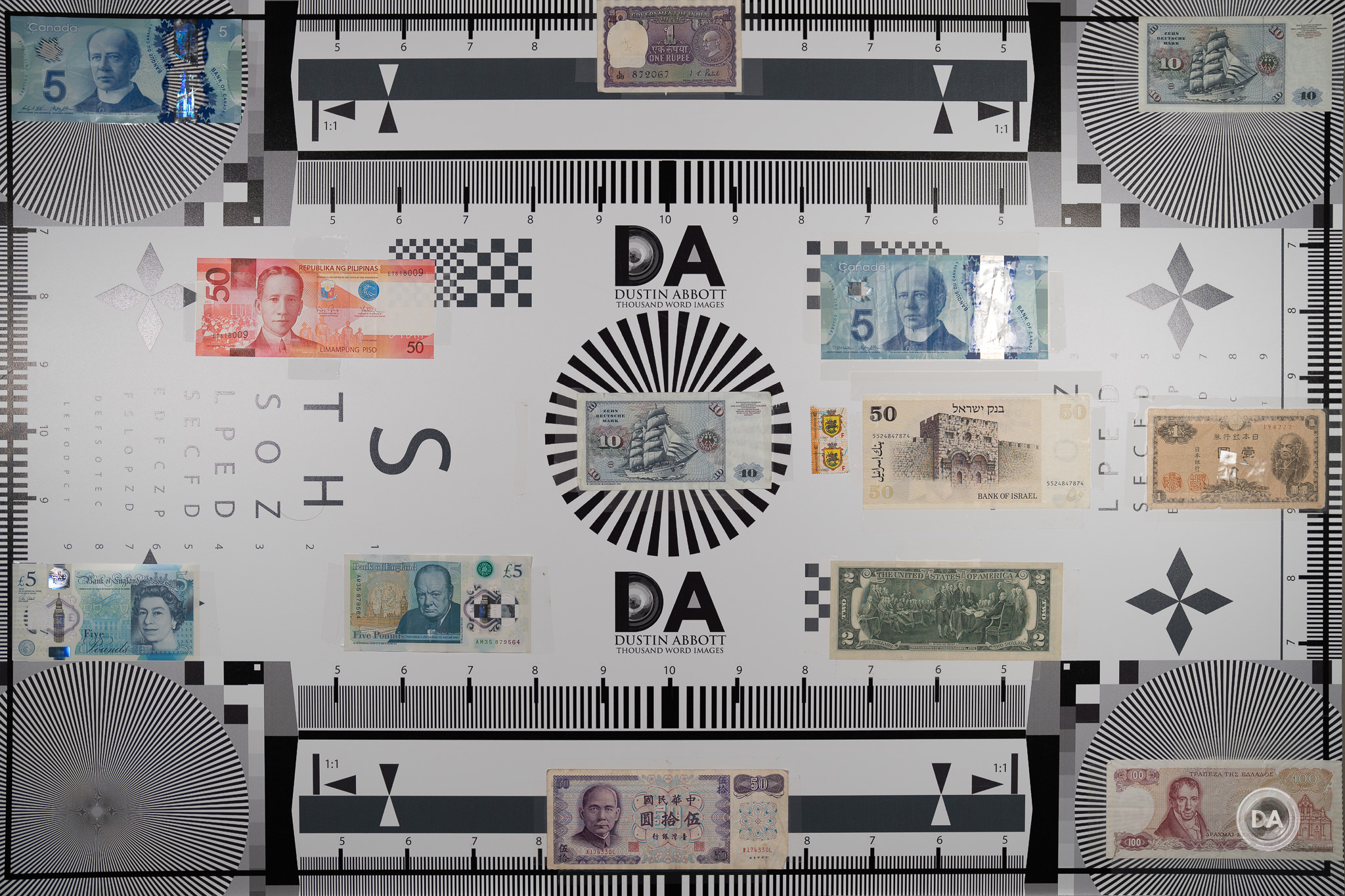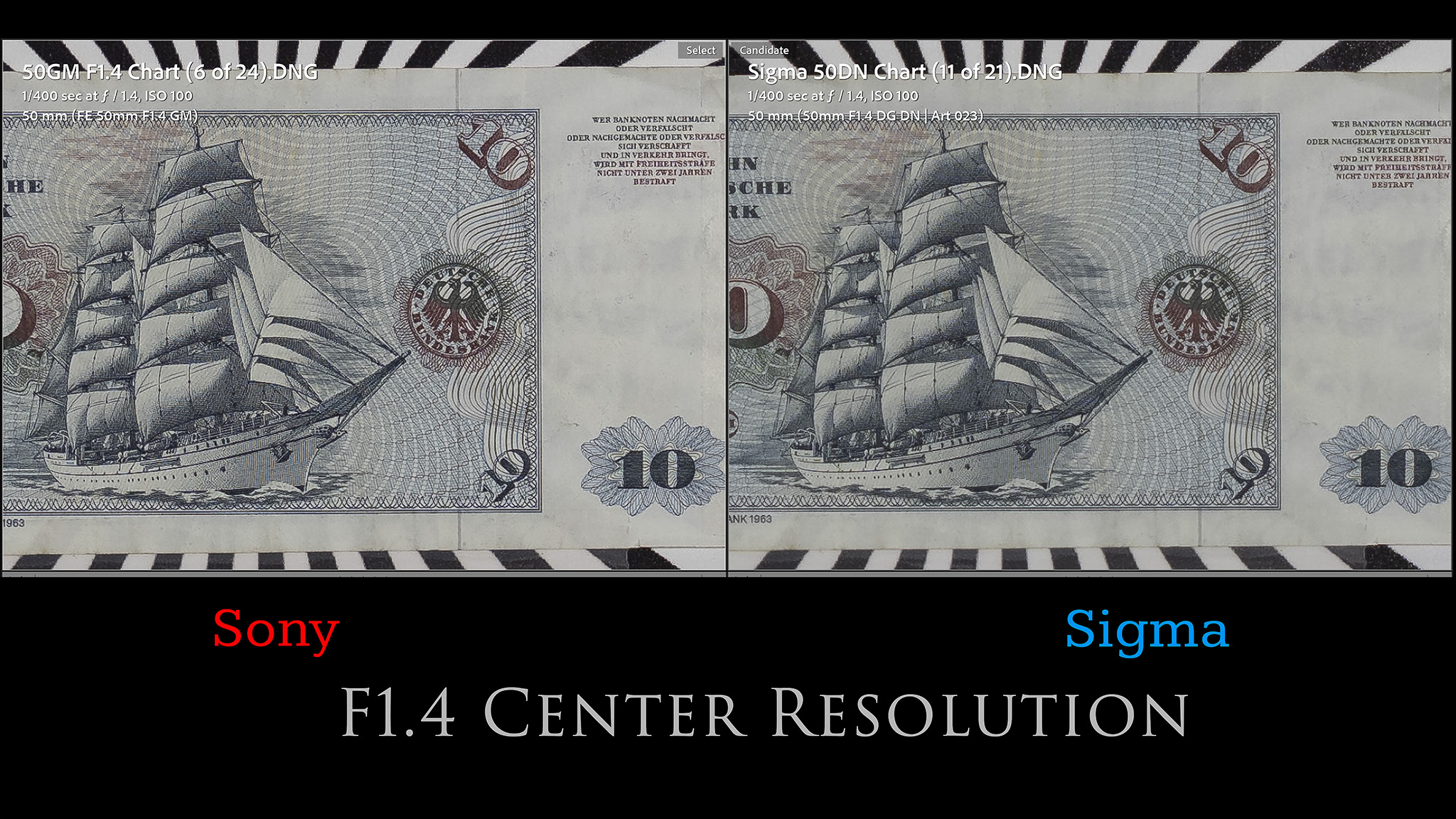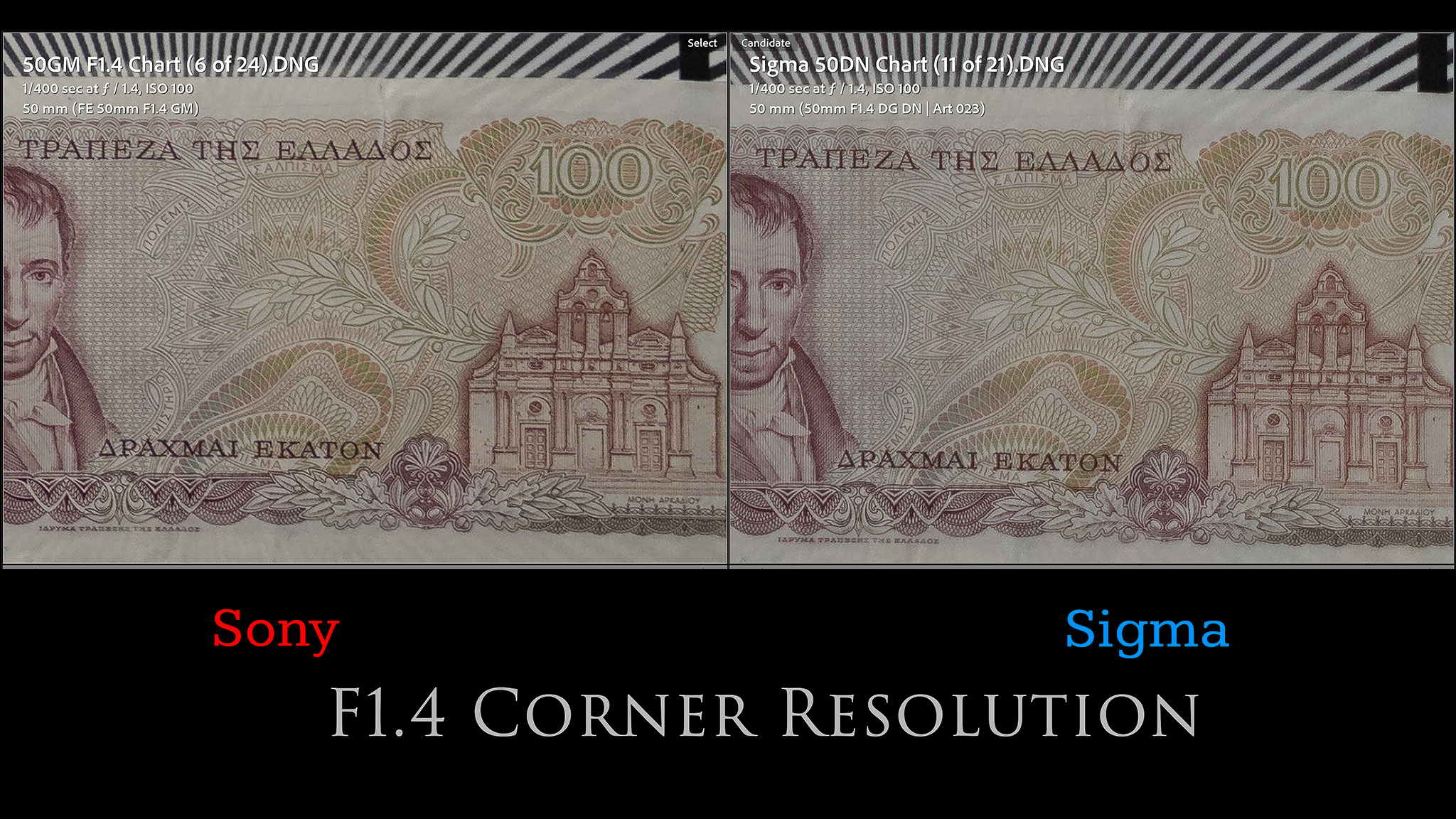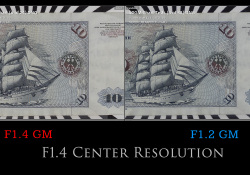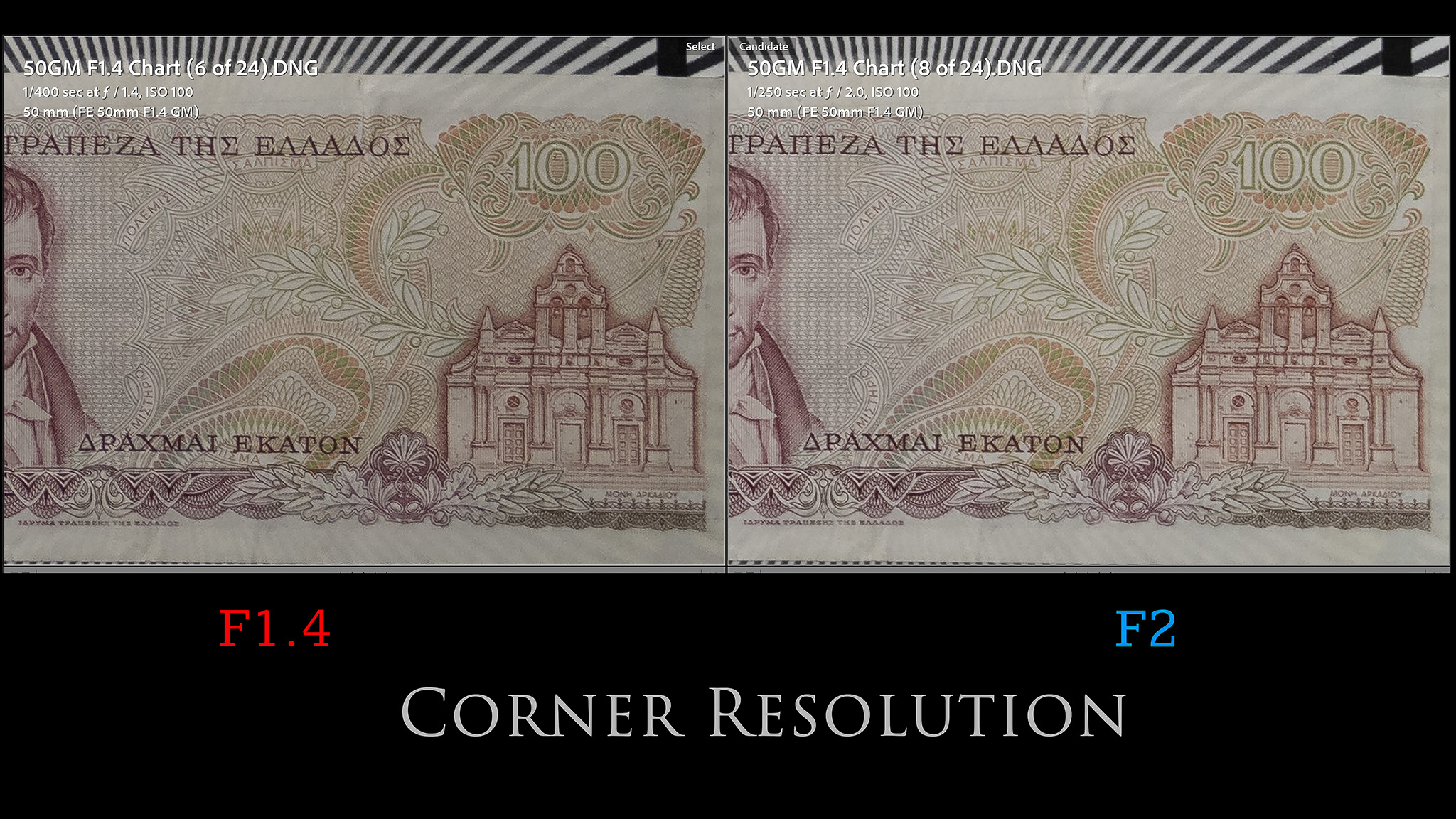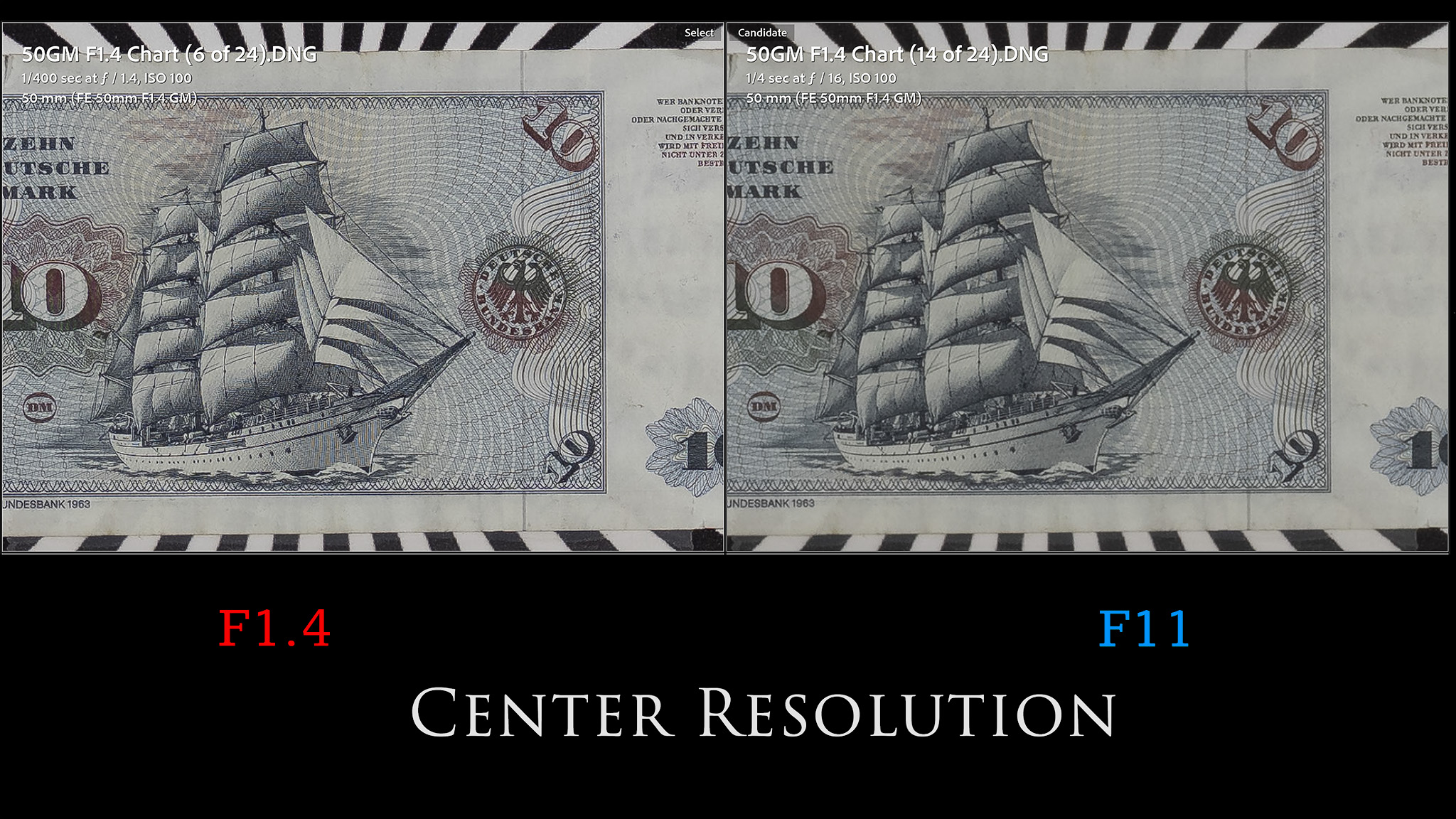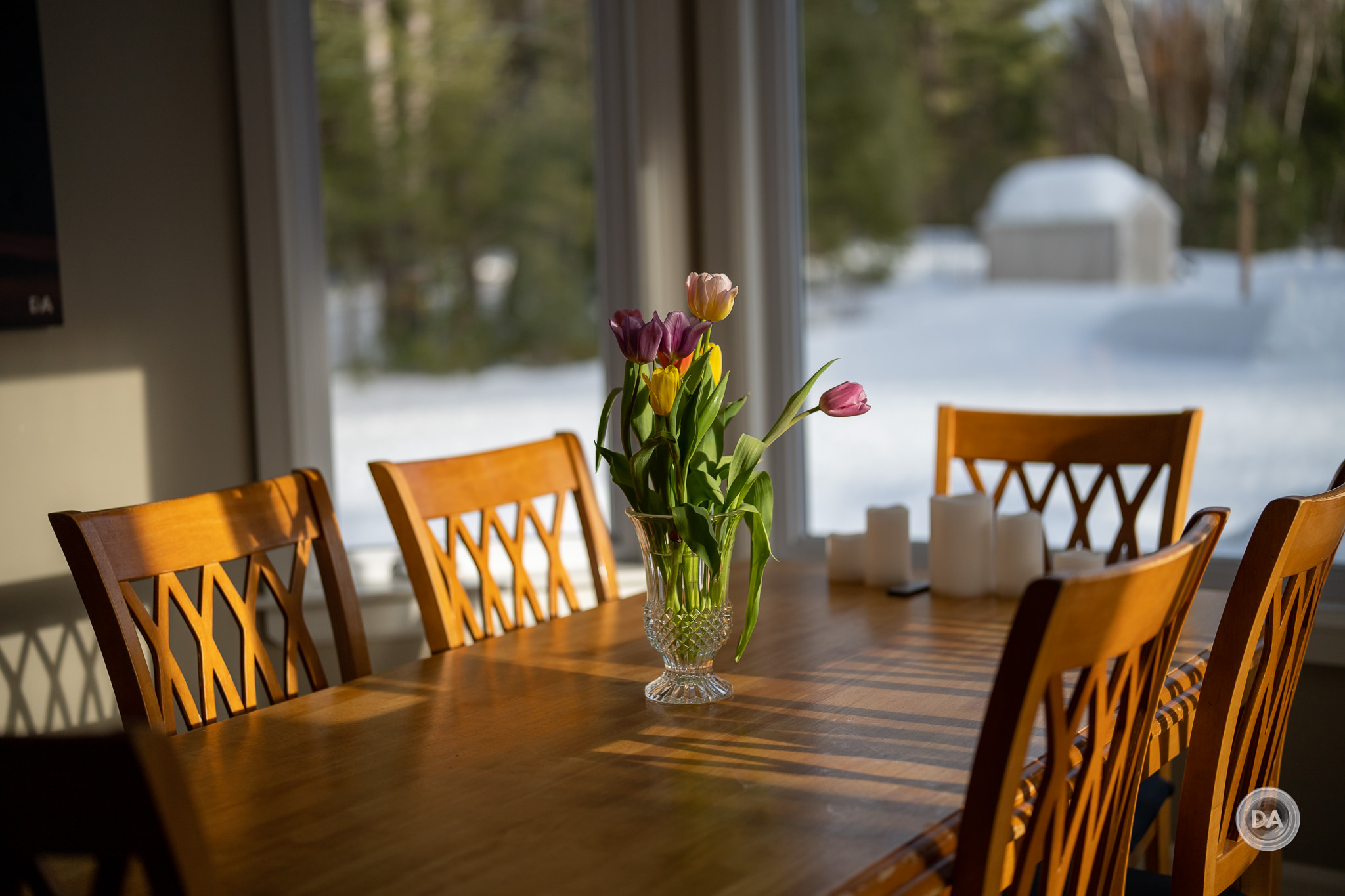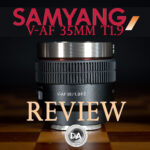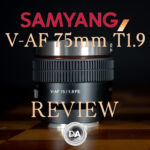When I did my review of the Sony FE 50mm F1.2 G Master (an exceptional lens!), I concluded that Sony had gone the F1.2 route to help incentivize owners of the already good Sony Zeiss Planar 50mm F1.4 (my review here) to upgrade. I theorized that an F1.4 lens might not have gotten people’s attention in the way that a F1.2 lens would. I still think that’s correct, but clearly Sony also felt that there was room for a smaller, lighter, cheaper GM lens at the 50mm focal length, as their newest lens is just that: the Sony FE 50mm F1.4 G Master (we’ll call the 50GM F1.4 for short in this review).
Early reactions from my audience have been mixed, with plenty of people wondering why yet another 50mm lens was needed. I personally welcome this lens, however, as while I really, really love the 50mm F1.2 GM, it is more lens (and a more expensive lens) than many people need. I love the form factor of the 35mm F1.4 G Master (my review here), and the new 50GMF1.4 is a closer match for that lens (along with the 24mm F1.4 G Master) in size, and all three lenses share a common 67mm front filter thread. Obviously the price of every lens varies from region to region around the world, but in the largest market (the United States), there is a $700 price difference between the new 50mm F1.4 lens (at $1300 USD) and the 50mm F1.2 GM ($2000 USD).
Further muddying the waters is the recently released Sigma 50mm F1.4 DN ART (my review here), a very competent lens with very sharp optics along with very fast autofocus. It retails for $850 USD, which makes it a relative bargain. I know in some European market the price difference between the Sigma and the new Sony is nearly double, so that will obviously be a factor for many photographers.
The Sony 50GM F1.4 does have some advantages, however, and we’ll detail those as a part of this review along with demonstrating why this lens certainly has a legitimate place in the market. But should it be your new 50mm choice? Hopefully this review will help you make that decision, so read on…or watch the review below.
Follow Me @ YouTube | Patreon | Instagram | Facebook | DA Merchandise | Flickr | 500px
Thanks to Sony USA for sending me a loaner copy of the 50mm F1.4 GM. As always, this is a completely independent review. *The tests and most of the photos that I share as a part of my review cycle have been done with the Sony a7IV along with the Sony Alpha 1 which will serve as my benchmark camera for the foreseeable future (my review here).
own.
Sony 50GM F1.4 Build, Handling, and Features
The new Sony 50mm F1.4 GM has a size and weight advantage over almost every other 50mm F1.4 option on the market. I say “almost” because Samyang’s 50mm F1.4 Series II lens is slightly more compact and lightweight, though the Sony’s build quality and feature set is more robust by comparison. Here’s a look at how these lenses compare:
As noted earlier, the new 50GM F1.4 shares a 67mm filter thread size with the 24mm and 35mm F1.4 G Master lenses, which is always very convenient. Tamron has built the majority of its Sony FE lenses around this same filter size, so you could definitely put together a quality kit of lenses that could easily share filters. These lenses are similar in size and design, though the new 50mm lens is wider in girth. Here’s a look at the 35mm (which I own) and the new 50mm side by side.
The 50GM F1.4 is 80.6mm in diameter (3.2″) and is 96mm (3.8″) in length. The weight is 516g (18.2 oz). That makes it about 15.5mm shorter and 150g lighter than the new Sigma 50mm F1.4 DN ART lens, and about 12mm and 260g lighter than the Sony Zeiss Planar F1.4, which, ironically, is about the same difference as between the 50mm F1.2 GM and the new F1.4 lens, though the F1.2 is also about 6mm wider in diameter. The ultimate winner if you want to travel light, however, is the Samyang AF 50mm F1.4 II, which is 7mm shorter and weighs nearly 100g less. You can see that difference with them side by side, but it isn’t huge:
Still, the GM lens is impressively compact when you consider the superior optics, more advanced features, and faster (multiple) focus motors that are housed in it. That smaller size and lighter weight will make a real world difference, particularly if you don’t shoot in a studio and are actually packing the lens.
Sony listed the Planar lens as being weather sealed, but they are also a little coy about the amount of seals and their location. I’ve reviewed the lens multiple times and owned one for a while, but I’ve never been able to locate a diagram showing the seal points. Sony is more forthcoming with the new GM lens, however, and the diagram shows eleven seal points by my count throughout the lens along with a fluorine coating on the front element. This is a thoroughly sealed lens that is designed for professional grade use in a variety of weather positions.
There is a lot of features packed into this compact lens. That starts with the aperture, where you have multiple options for controlling aperture. You can change it from within the camera, manually change it via one third stop detents, or have a declicked aperture by selecting the switch on the right side of the barrel. Sony has started including an “Iris Lock” switch as well, and this allows you to lock the aperture ring either into the manual control section or to lock the ring out of manual if you want to control it from within the camera. This ensures that there are no inadvertent bumps into an area you don’t want.
The lens also sports a focus hold button in two different positions (for easy access in both vertical and horizontal shooting modes) along with an AF/MF switch.
The manual focus ring is narrower than the one on the 50mm F1.2 (the F1.4 is a smaller lens!), and I measure it at right under 2 centimeters in width. It has a ribbed, rubberized texture, and moves smoothly. The damping is a little on the light side, however, and so the focus action isn’t as excellent as I’ve seen in some lenses. The focus ring is nicely linear, however, which makes for highly repeatable results.
The 50GM F1.4 has a mild advantage over the recent Sigma 50mm F1.4 DN in minimum focus distances, as it can autofocus as closely as 41cm as opposed to the 45cm of the Sigma. Both the 50mm F1.2 GM and the Samyang can focus slightly closer, at 40cm. The 0.16x magnification on the 50mm F1.4 GM is mid-pack here, as the Sigma (and older Planar lens) are 0.15x, while the Samyang is also 0.16x and the 50mm F1.2 is 0.17x. Here’s what MFD looks like for the 50GM F1.4:
The 50GM F1.4 does have one other trick here, though, as you can actually manually focus as closely as 38cm, which ups the magnification level to 0.18x. Wide open MFD performance is excellent, with high contrast, good texture rendering, and a flat plane of focus. The closer manual focus result has very slightly less contrast, but is still very good, and it does definitely make a visible difference in magnification if you put them side by side.
This opens up some additional creative options for what you can do with the lens, and using wide aperture lenses at closer distances is one of my favorite types of photography because of the dramatic results.
The 50GM F1.4 sports a high aperture blade count of 11, which is useful in maintaining a circular shape as the aperture is stopped down. You can see that the aperture is fairly circular even here at about F8 or so:
We can see from this series (F1.4, F2, and F2.8) that even at F2.8 the aperture is basically perfectly circular, and while there is some geometric deformation at F1.4 near the edges (lemon shape), the the F2 example shows near-perfect circular shape even at the edges of the frame. The specular highlights are also free of concentric circles or general busyness, which points to a nice out of focus rendering.
This attention to detail helps photographers have options in more situations. I’ve seen some 50mm lenses whose bokeh turned pretty ugly if you had things like Christmas lights in the frame, but that is far from being the case here.
In short, the 50GM F1.4 basically ticks all the boxes. It is smaller and lighter than most competing lenses, has a wide variety of features, and is functionally pretty much perfect other than lacking a bit of feel during manual focus. It looks great mounted on the camera, has quality weather sealing, and functionally works very well. It is pricier than some competing options like the Samyang and Sigma, but is also a little more premium in its execution.
Sony 50mm F1.4 GM Autofocus and Video Performance
As a lens reviewer for over a decade now, I’ve learned that there is a direct correlation between the amount of power in a focus system and the accuracy it is able to achieve. It’s not just the amount of power needed to start the focus group moving, but also the power and control needed to quickly stop that movement at the perfect spot to achieve accurate focus without pulsing or settling. Sony has developed a winning autofocus formula in recent GM lenses by utilizing XD (Extreme Dynamic) Linear Motors. They evaluate the amount of power needed to drive the focusing element(s) and then employ the necessary numbers of XD motors to drive focus quickly and accurately. In this case, the necessary number is two, which is similar to the 35mm F1.4 GM. The 50mm F1.2 GM required quad XD motors due to having such large and heavy optical elements. Two is the magic number here, as that was all that was needed. Autofocus is fast, quiet, and accurate.
I had no problem pinpointing narrow depth of field subjects and getting consistently well focused results.
I bumped the ISO up to 6400 to get reasonable shutter speeds and set my Alpha 1 to full high speed burst mode, and then got Nala to walk towards me. I find that many lenses really struggle with this: a small target in unexceptional lighting that keeps moving towards the camera. At F1.4 the depth of field continues to shrink and the margin for error grows. The 50GM F1.4 nailed it, though. From 8:48:22 to 8:48:24 (a bit of overlap in the seconds) I shot 32 shots, all of which were perfectly focused. Here’s three frames from the beginning, middle, and end, and even the closest image where she was almost out of the frame is perfectly focused:
That’s a fantastic result, and while I also found that the Sigma 50mm F1.4 DN ART focused very quickly, Sony limits the burst rate with third party lenses to 15FPS, meaning that I would only have gotten a maximum of about 16 shots during that same period – half what I could get the GM lens. The Samyang just isn’t fast enough for that kind of scenario, and the older Planar lens would disappoint me at times with its random inaccuracy. The 50mm F1.2 GM also has fantastic autofocus if you want to move a little more upscale.
I also had my assistant use the 50GM F1.4 during a baptism service at our church, and in all of the various images the focus is completely nailed at a wide variety of focus distances.
Lenses like the 50GM F1.4 makes shooting portraits a breeze. Compose how you want and let Eye AF take care of the focusing. Gone are the “focus and recompose days” or the times when I was concerned with wide aperture lenses about using outer AF points that were less sensitive and produced inconsistent results. A modern Sony body and this lens can make pretty much anyone seem like a pro in terms of focus results.
I did my standard battery of video tests along with a few extras. The 50GM F1.4 breezed through the test where I block the lens from my face with my hand and than allow focus to snap back to the eye. There was no pulsing or settling, though I will note that focus transition speed was more smooth than fast. I went back and checked the same test from the Sigma and thought they were about equal. Focus consistency while I approached the camera was pretty good as well, though I’m not sure it is quite as “magical” as the focus speed for stills.
Likewise my focus transition test proved accurate, smooth, and quiet. There is no stepping here in focus transitions, just smooth and confident focus. There is some focus breathing (much like the Sigma), though Sony has once again baked in an advantage for their own lenses. Some of their newer cameras has a focus breathing compensation setting, and at the cost of a slight crop, the focus breathing is largely eliminated.
I also found that I could easily execute both manual focus pulls and aperture racks. The linear focus ring makes focus pulls repeatable, though, as noted, I wouldn’t mind a little more damping to the focus ring.
It wasn’t unusual in times past for large aperture lenses with heavier elements like this to have slower and noisier autofocus due to the reality of moving such heavy glass, but we have moved into a whole new reality for autofocus. The 50GM F1.4 is exceptional for autofocus.
Sony 50GM F1.4 Optical Performance
Sony has employed a relatively complex optical performance here with 14 elements in 11 groups. There are two of Sony’s XA (extreme aspherical) lenses and one ED (extra-low dispersion) lens in the design. The former, in particular, is the breakthrough in lens design that has allowed a lot of Sony’s recent success. The resulting MTF chart is pretty exceptional for a wide aperture 50mm lens. It shows a truly exceptional center performance (about 8 percentage points sharper in the center than the Sigma) but with a slightly weaker performance than the Sigma in the corner. It also looks good compared to the 50mm F1.2 GM, with a slightly lower center performance but stronger elsewhere in the frame. I’ve put a red line through the 80% mark here to give you a standard for comparing them all.
Another shot from my “tea series” at F1.4 shows how much “pop” is available right from F1.4 along with some pretty nice looking bokeh.
Some lenses are “paper tigers” and chart test well but are shown up in real world situations and lighting conditions. That’s simply not the case here. This is an optical powerhouse in terms of sharpness, but how does it hold up in other areas?
First of all, let’s a take a look at the vignette and distortion.
We find some of both, though not quite at the level of what I recently saw with the Sigma 50mm F1.4 DN. There is some pincushion distortion that isn’t entirely linear in nature. I used a -5 to correct the distortion, though you can see a mild wave after the manual correction. I used a +58 to correct the vignette, or just a bit over 2 stops in the corners. The Sigma showed a bit more distortion (-8 to correct) and almost a stop more vignette (+84 to correct). The distortion quality and amount is about similar to what I saw with the F1.2 GM lens, and the amount of vignette is lower (I used a +71 to correct vignette there). It’s worth noting that pincushion distortion is preferable to barrel distortion in a portrait lens because it is slimming, so in some cases you might be better off not correcting the distortion. JPEGs and Video will have correction in camera from both distortion and vignette, and automatic profiles for RAW images will be shortly available in editing software. The JPEG profile did a cleaner job of correcting the distortion than what I could do manually:
Longitudinal chromatic aberrations (LoCA) are fairly well controlled. I pumped light through my glass camera and put a window in the background, but I saw little fringing either on the glass of the camera or on the window frames.
This vase was sitting in a bright shaft of sunlight, so I got close and shot a wide open shot. I found minor amounts of fringing in some of the highlight areas, but nothing that you would see without looking at a pixel level as we do here in the crop:
Nothing really to be concerned about here, and contrast remains very high in all of my shots, so spherical aberrations are diminishing image quality, either.
LaCA (Lateral CA) was extremely well controlled, with no evidence of fringing along the edges on either side of black and white transitions.
The well controlled aberrations point to very strong contrast even at wide apertures, and that was certainly the case. Here’s a look at my test chart shot with the 50MP Sony Alpha 1.
And here are the crops from the center, mid-frame, and corner at F1.4:
You can see excellent resolution and contrast that is very consistent across the frame.
The new GM lens is easily stronger than the Sigma in the middle of the frame and the midframe:
The Sigma has a tiny edge in the corner, however:
If you are interested in a more in-depth comparison between these two lenses, I have a video that might interest you.
If I compare with the F1.2 GM lens I find about the same performance. The new F1.4 GM lens is the winner in resolution across the frame with the exception of the far corners.
This is an incredibly sharp lens. Very impressive. If I focus in the corner and then compare the center focus and corner focus I find that the corner is good, but the center and midframe are exceptional.
There’s not a lot more to be gained in the center of the frame or midframe, as these are essentially flawless. Stopping down to F2 shows just a tiny bit more contrast and detail in the corners.
There’s more of a contrast gain at F2.8, and by F4 the image quality is truly flawless across the frame. Landscape apertures are exceptionally sharp. Here’s a shot taken at F2.8, and you can see how crisp the detail is all across the frame.
Minimum aperture is F16, which isn’t as small as some lenses. The lens is so exceptionally sharp that it survives diffraction reasonably well, though you can see that F1.4 is much sharper than F16 when you compare them:
Where Sony has really excelled here is by designing a lens that can deliver both high levels of sharpness and contrast on the subject while also delivering very soft, pleasing bokeh. I think this image is a great case in point:
My experience is that few lenses manage to do both these things, and Sony has been doing a great job of delivering lenses that can. I love the rendering of the Samyang AF 50mm F1.4 II, but the Sony manages to extreme sharpness plus a similarly nice rendering.
I saw many reasons to be happy about the bokeh rendering from the lens. Here’s a few of them:
Sony has some of the best coatings in the business right now, and I’ve found a lot of their recent lenses to be class leaders in flare resistance. The 50GM F1.4 isn’t exempt from flaring, particularly at wide apertures, though contrast stays quite good. The flare resistance at smaller apertures is even stronger.
I also tested the coma as I got a reasonably clear night. Star points are very crisp in the center of the frame. There is some mild deformation of star points towards the edge of the frame, but the results are largely very good.
This is one of those rare lenses that is pretty much good at everything. I’m not sure the rendering is quite as magical as the F1.2 GM, but for an F1.4 lens, this is pretty special. Do yourself a favor and check out more images by visiting the image gallery here.
Conclusion
This was a lens that few people were anticipating. Sony released the 50mm F1.2 GM less than two years ago, and thus few people anticipated a second 50mm GM lens. The Sony Zeiss Planar continues to be sold (though I fully expect it so see a price cut as it currently stickers for $200 more than the new GM lens). But while few of expected the Sony FE 50mm F1.4 GM, I’m certainly happy that it is here. It’s not as exotic as the 50mm F1.2 GM, but it’s definitely more attainable for many photographers. The price point of $1299 USD isn’t cheap, but it seems to be a relative value compared to the top flight F1.2 options on mirrorless platforms.
This lens has it all: a lot of features, blazing fast autofocus, and insanely good optics that at least in some ways equal and ever surpass the magical F1.2 G Master lens. That lens’ extremely shallow depth of field and creamy backgrounds are a little more exotic than what the F1.4 lens can achieve, but in general the overall rendering and look of the images is plenty good.
The big debate for many people will be whether or not the new 50GM F1.4 is worth the premium over the new Sigma 50mm F1.4 DN. There isn’t a huge difference in features, optics, or autofocus (unless you want the fast burst rates reserved for Sony lenses), though I give a slight edge to the Sony in each category. The more compact size of the new Sony is possibly the deal-MAKER for me. I love my 35mm F1.4 G Master, and having a 50mm lens that is similar in size and performance is very welcome to me. The fact that I do own one of Sony’s sports bodies means that having the potential of fast burst rates is worth a bit more to me. The Sigma is a great lens, but I do slightly prefer the rendering of the Sony. As per usual, however, there really isn’t a bad choice here. The Sony options are great, the Sigma is great, and even the Samyang is very worthy in most situations. The winner? It’s us – the consumers, who have never been so spoiled for quality choice as we are right now.
Pros:
- Slightly smaller and lighter than most competitors
- High grade of build
- Quality weather sealing
- Good features and general handling
- Fast, quiet, and accurate autofocus
- Excellent wide open sharpness across the frame
- Beautifully soft bokeh
- Low chromatic aberrations
- Good flare resistance
- Better than average magnification and excellent up close performance
Cons:
- Distortion is a little complex
- The F1.2 lens produces slightly more “exotic” images
Purchase the Sony 50mm F1.4 GM @ B&H Photo | Amazon | Camera Canada | Sony Canada | Amazon Canada | Amazon UK | Amazon Germany | Used at KEH
Purchase the Sigma 50mm F1.4 DN ART @ B&H Photo | Amazon | Camera Canada | Amazon Canada | Amazon UK | Used at KEH | eBay
Purchase the Sony a7RV @ B&H Photo | Amazon | Camera Canada | Amazon Canada | Amazon UK
Purchase the Sony a7IV @ B&H Photo | Amazon | Camera Canada | Amazon Canada | Amazon UK | Amazon Germany
Purchase the Sony Alpha 1 @ Camera Canada | B&H Photo | Amazon | Amazon Canada | Amazon UK | Amazon Germany | Ebay
Purchase a Sony a9M2 @ B&H Photo | Amazon | Camera Canada | Amazon Canada | Amazon UK | Amazon Germany | Ebay
Want to support this channel? Use these affiliate links to shop at: B&H Photo | Amazon | | Camera Canada | Ebay | Make a donation via Paypal
Buy DA Merchandise https://bit.ly/TWIMerch
Peak Design Leash Strap: Peak Design Store | B&H Photo | Amazon | Amazon Canada | Amazon UK
Adobe Photoshop Creative Cloud 1-Year Subscription
Get a discount off all Skylum Editing Software (Luminar, Aurora HDR, AirMagic) by using code DUSTINHDR at checkout:
Visit Dustin’s Amazon Storefront and see his favorite gear
Purchasing your gear through B&H and these links helps fund this website and keeps the articles coming. You can also make a donation here if you would like. Visit my Amazon page for some of my gear of choice! Thank you for your support.
Purchasing your gear through B&H and these links helps fund this website and keeps the articles coming. You can also make a donation here if you would like. Visit my Amazon page for some of my gear of choice! Thank you for your support.
Receive a 5% discount on all purchases at Amplis Foto, Canada’s Leading Photographic Supplier. Please enter discount code: AMPLIS52018DA in your cart. It is good for everything in your cart, and is stackable with other coupons, too! It will take 5% off your entire order! Proceeds go towards keeping this site going and providing you with new reviews!
Use Code “DUSTINHDR” to get $10 off ($15 CDN) any Skylum product: Luminar, Aurora, or AirMagic
Keywords: Sony 50mm, 50mm, 50GM, F1.4, G Master, Sony 50mm F1.4 GM, FE, Sony 50mm F1.4 GM Review, Review, Telephoto, Action, Tracking, Hands On, Dustin Abbott, Real World, Comparison, Sharpness, Bokeh, Flare Resistance, Autofocus, Image Quality, Sample Images, Video, Photography, Sony a9, sony a7RV, Sony a7R 5, sony a7IV, a9II, Sony Alpha 1, Sony A1 let the light in, #letthelightin





